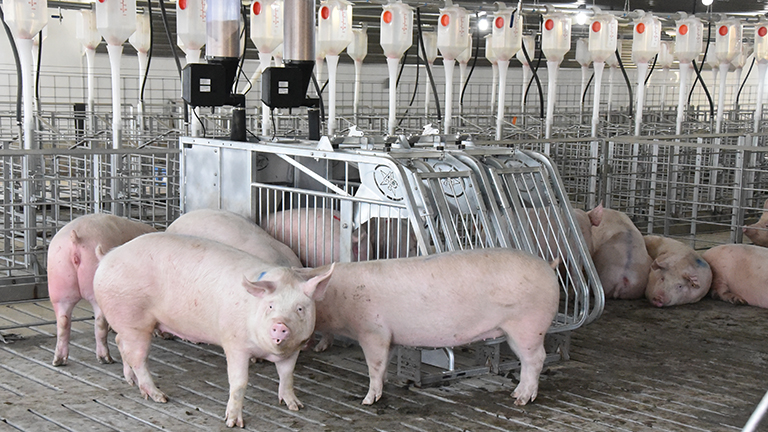Swine Gestation Barn Lighting

Proper swine gestation barn lighting can enhance the growth and development of swine, leading to earlier sexual maturity. By extending light exposure before mating and during swine gestation, the secretion of sex hormones can be boosted, improving ovarian and uterine function. This results in higher conception rates, better embryo attachment and development, and a reduction in embryo loss during swine gestation, which is crucial for increasing litter sizes.
Light intensity significantly influences the reproductive performance of swine. When swine are kept in low light or dark conditions, their ovarian weight and function decline, leading to lower conception rates. Increasing light intensity can notably enhance litter size, birth weight of piglets, and weaning weight. Research indicates that raising light intensity from 6-8 lux to 70-100 lux can increase litter size by 5% to 15%, birth weight by 4.5% to 16.7%, and weaning weight by 5.4% to 12.2%. The duration of natural light varies with the seasons, being longest at the summer solstice and shortest at the winter solstice. This seasonal change is a key factor in the fluctuating reproductive capacity of swine.
Studies reveal that after the winter solstice, the conception rate for breeding swine declines as daylight increases, reaching its lowest point from June to February. Following February, as daylight decreases, the conception rate gradually rises. Therefore, managing light exposure based on the natural light cycle can effectively enhance the reproductive performance of swine.
Impact on lactating swine: The influence of light on lactating swine primarily affects milk production. Extending light exposure and increasing light intensity can stimulate the secretion of prolactin, a hormone essential for milk production. Increased prolactin levels lead to greater milk output from swine, providing ample nourishment for piglets, which in turn boosts their weaning weight, vitality, and survival rates.
The influence of light on nursing piglets is significant. With the right light intensity and duration, the weaning weight of piglets can be enhanced. This improvement is attributed to the fact that adequate lighting boosts milk production in nursing swine and also has a direct impact on the piglets themselves. Typically, piglets weaned under bright lighting weigh more than those in dim conditions. Furthermore, extending the duration of light exposure can help lower the likelihood of piglets developing gastroenteritis, decrease mortality rates, and promote greater daily weight gain.
Regarding weaned piglets, light intensity plays a crucial role in their feed consumption. In dark settings, weaned piglets tend to refuse food. By increasing the number of hours of light, feed intake can be enhanced, which in turn boosts daily weight gain and feed efficiency. This leads to improved health, accelerated growth rates, a lower incidence of diseases, and reduced mortality among weaned piglets.
Related Products


Related Solution & Science
Related Blog
Led Swine Lighting: The Application of Light Fixtures for Swine Barns
Pig Farms Lighting Design: Best Light for Pig House
Contact Ceramiclite
